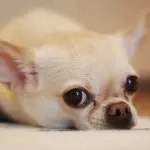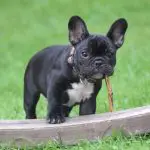How to find the right dog for you
Choosing a Dog.
Dogs are cute cuddly and make great companions. Before you buy a dog make sure you choose the one that’s right for you, your lifestyle and your living space. Evaluate your lifestyle and family circumstances. Do you have small children? Are you active? What are your family hobbies and activities? Does anyone in your family have allergies?
Make a list of the qualities you want or need in a dog. Do you need a lap dog, guard dog, small or toy size or can you and your home accommodate a large dog? Do you want a dog with long fur that sheds and needs special grooming?
No dog is totally non allergic but some cause fewer allergies than others. Typically breeds that do not shed as much or that require frequent bathing are less allergic. Also, small dog breeds because they produce less saliva. Poodles and Poodle mixes are least allergic.
Once you have completed your list, go to the library or the AKC web site and check out information on all the different breeds of dogs until you find one that fits your family.
Purchase your dog from a responsible, ethical breeder who produces high quality, healthy dogs with stable temperament. The AKC has breeder referral contacts for each recognized breed.
Dog Breeds.
There are many breeds of dogs and they mainly fit into these AKC acknowledged groups;
The first is called the Sporting Group. These dogs are active, alert, likeable and make well rounded companions. They do require regular invigorating exercise. They include the Cocker Spaniel, Irish Setter and the Vizsla.
The second group are Hounds. These dogs are mostly used for hunting because of their scenting powers and stamina. Beware though because instead of barking some hounds produce a deep baying sound. Hounds include the Basset Hound, Beagle and Blood Hound.
Third are Working Dogs. They have mostly been bred to guard, pull sleds or rescue. They are quick to learn, intelligent, capable and make solid companions. Their size and strength can make them unsuitable for children. These dogs must be properly trained. They include the Boxer, Great Dane and Rottweiler.
Fourth are Terriers. They are feisty, energetic and range in size from very small to medium sized. Most were bred to hunt. They can have wiry coats that require special grooming. They also require owners with determination to match their lively spirits. This group includes breeds such as the Cairn Terrier and Miniature Schnauzer.
Fifth is the Toy Group. They are diminutive in size but very expressive. They are very popular for people with small living spaces. It is easier to control and care for smaller dogs, though they can have long coats that need special care. They include the Chihuahua, Pug and Pomeranian.
Sixth is the Non Sporting Group. This is a diverse group of sturdy dogs with different personalities, sizes, coats and appearances. It includes breeds such as the Dalmatian, Bull Dog and Chow.
Seventh is the Herding Group. This is the newest class and is composed of dogs that used to belong to the Working Group. They share the ability to control the movement of other animals. They are intelligent, make excellent companions and respond well to training. It includes breeds like the Collie, German Shepherd and Old English Sheep Dog.


